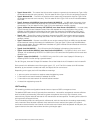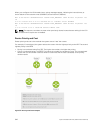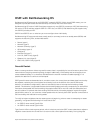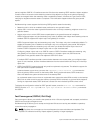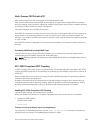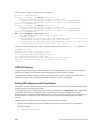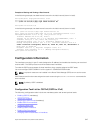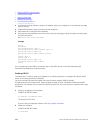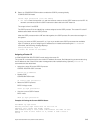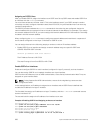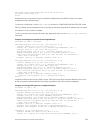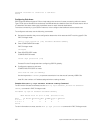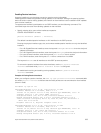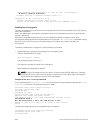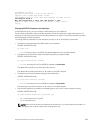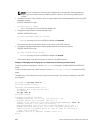
3. Return to CONFIGURATION mode to enable the OSPFv2 process globally.
CONFIGURATION mode
router ospf process-id [vrf {vrf name}]
• vrf name: enter the keyword VRF and the instance name to tie the OSPF instance to the VRF. All
network commands under this OSPF instance are later tied to the VRF instance.
The range is from 0 to 65535.
The OSPF process ID is the identifying number assigned to the OSPF process. The router ID is the IP
address associated with the OSPF process.
After the OSPF process and the VRF are tied together, the OSPF process ID cannot be used again in
the system.
If you try to enter an OSPF process ID, or if you try to enable more OSPF processes than available
Layer 3 interfaces, prior to assigning an IP address to an interface and setting the no shutdown
command, the following message displays:
C300(conf)#router ospf 1
% Error: No router ID available.
Assigning a Router ID
In CONFIGURATION ROUTER OSPF mode, assign the router ID.
The router ID is not required to be the router’s IP address. However, Dell Networking recommends using
the IP address as the router ID for easier management and troubleshooting. Optional process-id
commands are also described.
• Assign the router ID for the OSPFv2 process.
CONFIG-ROUTER-OSPF-id mode
router-id ip address
• Disable OSPF.
CONFIGURATION mode
no router ospf process-id
• Reset the OSPFv2 process.
EXEC Privilege mode
clear ip ospf process-id
• View the current OSPFv2 status.
EXEC mode
show ip ospf process-id
Example of Viewing the Current OSPFv2 Status
Dell#show ip ospf 55555
Routing Process ospf 55555 with ID 10.10.10.10
Supports only single TOS (TOS0) routes
SPF schedule delay 5 secs, Hold time between two SPFs 10 secs
Number of area in this router is 0, normal 0 stub 0 nssa 0
Dell#
Open Shortest Path First (OSPFv2 and OSPFv3)
649



